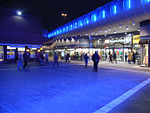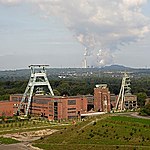ZOOM Erlebniswelt Gelsenkirchen
ZOOM Erlebniswelt Gelsenkirchen, founded on April 14, 1949, as "Ruhr-Zoo", is one of the most modern zoological gardens in Germany. It was founded on a heavily shelled area in Gelsenkirchen adjacent to a port on the Rhine–Herne Canal. It initially encompassed 15.5 hectares. During its first years, there was a large turnover of animals as an animal trader provided them. Today the park is owned by the city of Gelsenkirchen via GEW – Gesellschaft für Energie und Wirtschaft mbH (society for energy and business), a holding of municipally owned concerns. After 2004 the park was enlarged to the present size. It is incredibly well known for its panoramas and cultural approach. The main attractions are big animals, mostly mammals; the zoo has no aquarium house, insectarium or other facilities for smaller animals. The numbers before 2005 reflect average visitor numbers for the old Ruhr-Zoo.
Excerpt from the Wikipedia article ZOOM Erlebniswelt Gelsenkirchen (License: CC BY-SA 3.0, Authors).ZOOM Erlebniswelt Gelsenkirchen
Canopy Walk, Gelsenkirchen Bismarck (Gelsenkirchen-Mitte)
Geographical coordinates (GPS) Address Nearby Places Show on map
Geographical coordinates (GPS)
| Latitude | Longitude |
|---|---|
| N 51.544166666667 ° | E 7.1108333333333 ° |
Address
Sibirischer Tiger
Canopy Walk
45889 Gelsenkirchen, Bismarck (Gelsenkirchen-Mitte)
North Rhine-Westphalia, Germany
Open on Google Maps










